Welcome to the village of Soroki in 1934. It is located in present Ukraine, Ivano – Frankivsk Province. Have a look at the map. It was Poland at times when the pictures were taken and Austro-Hungary prior to WWI. It is a typical village farm and if your family comes from Galicia, you can get the taste of how they lived. Let us study these rare pictures and try to learn a bit more. I only wish there were more photos since that time as they make live everything we already know well.
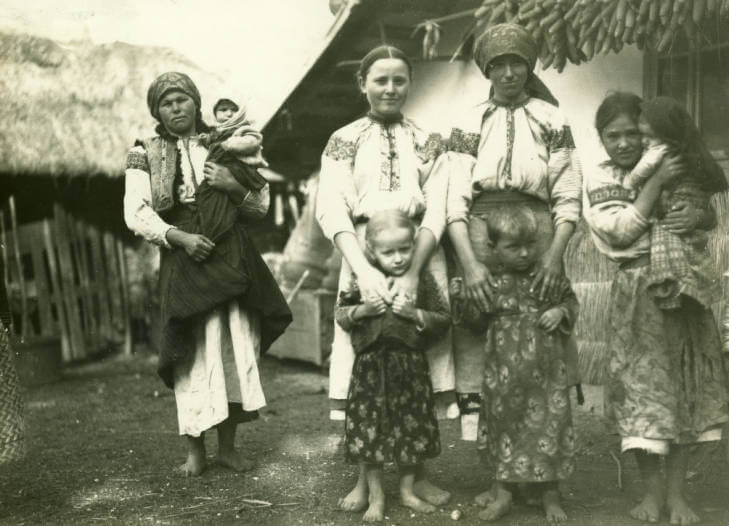
That is so good to see the girls smiling I am sure they do not have pictures of them taken often and it does require some courage!
We can see that there are several generations and several families living under the same roof. Yes, look at the roof too. In local terms, they are not a poor family. Yes, we can see the thatched roof of the barn and bare feet but look at the roof of the house. It is covered with metal and not many people in the village could afford it at that time.
We can see two women traditionally wearing khustkas (headcloths) which means that they are married.
It is very interesting to see the family wearing embroidered shirts. I really doubt they had time to dress up because the photo was taken when L. Boyd, an American explorer was driving through the village. Does it mean that these are their everyday clothes? I have checked to see what day of the week it was. The picture was taken on Sep 23, 1934 and it was Sunday, a weekend and a holiday when nobody was allowed to work. Now I see. They might be back from the church mass and the church these people attended still exists today. Check this link to see what it looks like.
Where are the men on Sunday? Learn more about village pubs in our post here.
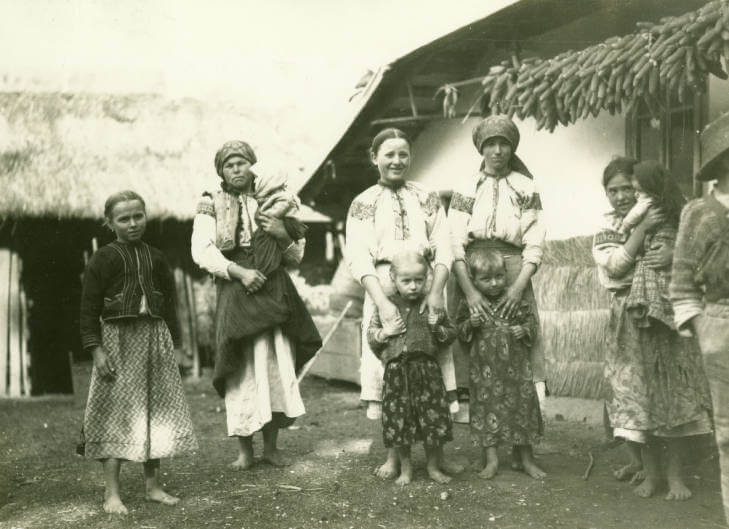
The outfits for 2 children standing in the middle are about the same and we can suppose that’s the typical kind of clothes for kids of this age in this area. It was bought in a shop or in the market (read more about markets here) whist the white shirts are self-made and embroidered. The linen is made of hemp and you can see hemp plants leaned on the wall near the window on the next picture. Hemp seeds were used to make oil.
It is September and the corn has already been harvested. Corn was and still is an important crop in this part of Ukraine. Every bit and piece of it was used to feed the animals and poultry, produce flower to bake bread, cook soups and cereal, make oil. The empty cobs were used to burn in the oven (read more about ovens, superstitions and beliefs connected with them here).
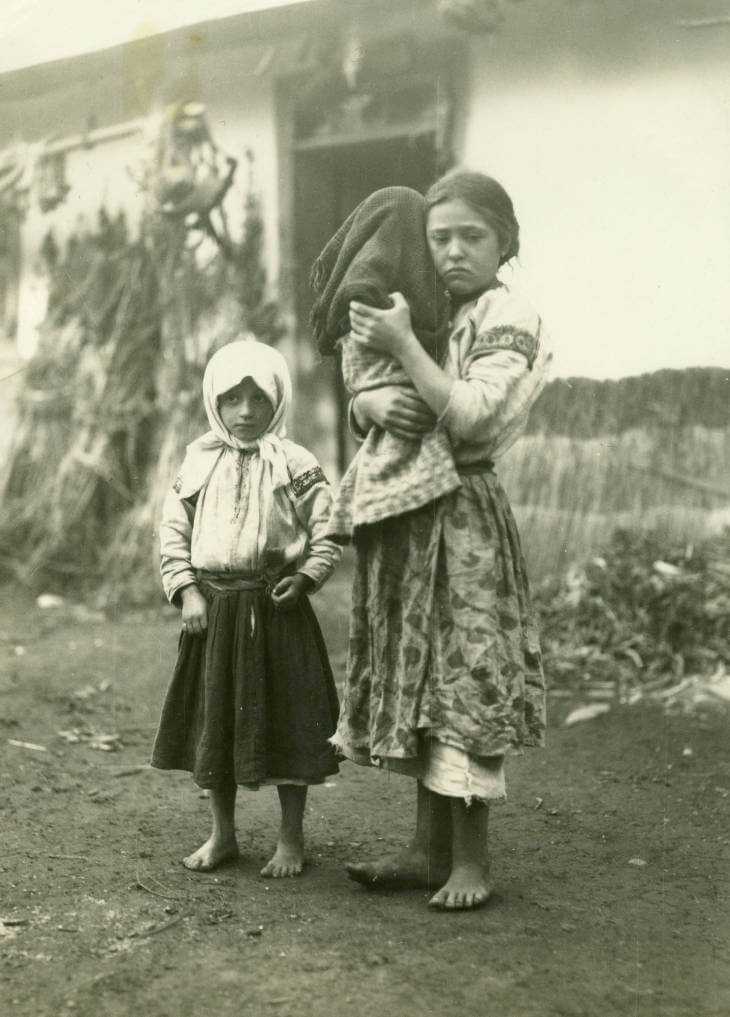
These children are not happy and the girl on the left looks sickly to me. It looks like she’s got something hidden under the shirt, could be a piece of bread. It is interesting how they hide the baby…
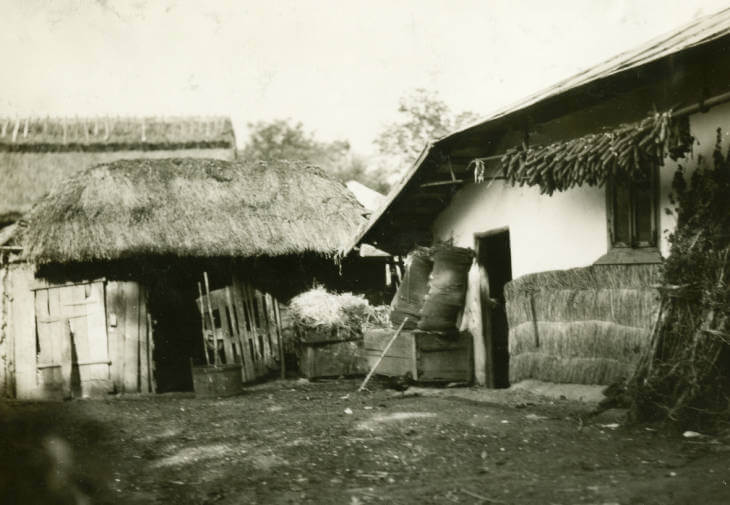
The shield you can see under the window of the house on the photo above is made of reeds brought from the Topolivka river that flows through the village. The main purpose is to keep out dampness and keep cover the whitewashed walls clean from mud when it rains. I do not think it does much in terms of insulation. The house is made of wood and the walls are plastered. The wooden box (aka small wooden fence) leaned on the wall was most probably used to keep small chickens or ducklings.
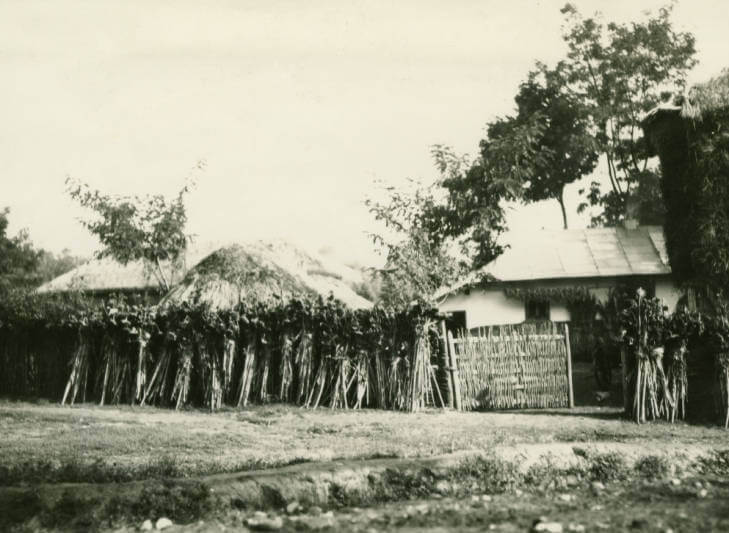
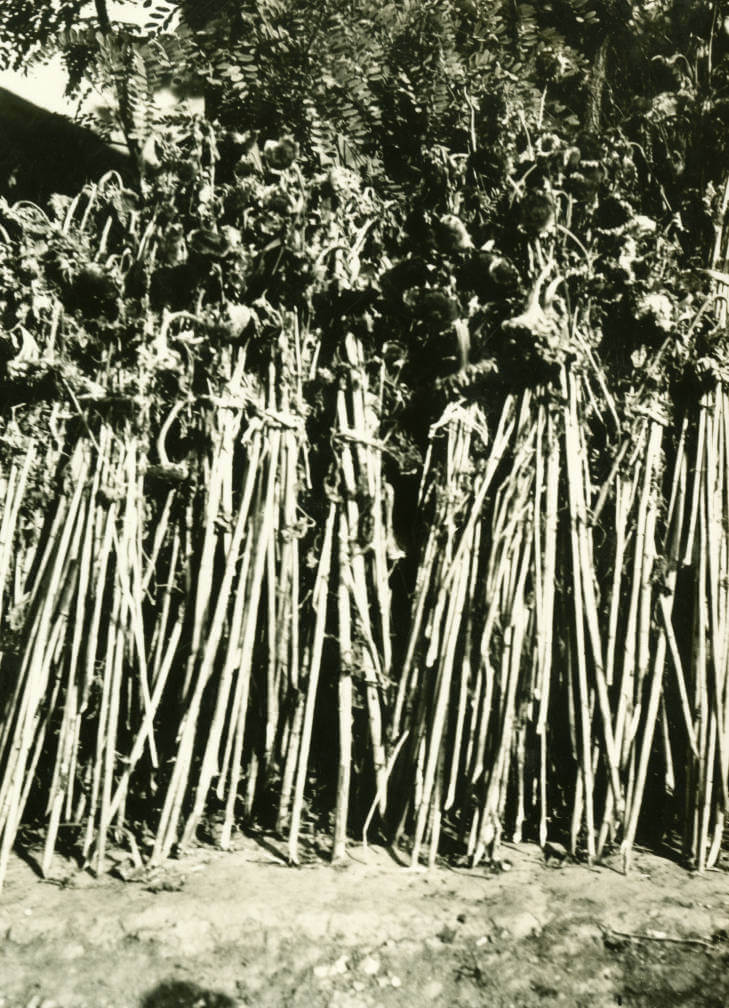
You can see the entrance to the same farm on the photo above. The sunflower plants are being dried along the wooden fence. Again, there was no way to waste: the seeds were used to make oil and the dry plants were used to burn in the stove and heat the house. There were usually one or two oil mills in each village. There was no way to have your property unfenced at that time and it is the same in a Ukrainian village today. You’ve got to protect what you have and keep your chickens inside too
I look at these pictures and I think: my God, they had to be strong. It is so good to have a chance at least to have a glimpse into the past and understand what things were like.
Greetings from your ancestral lands!
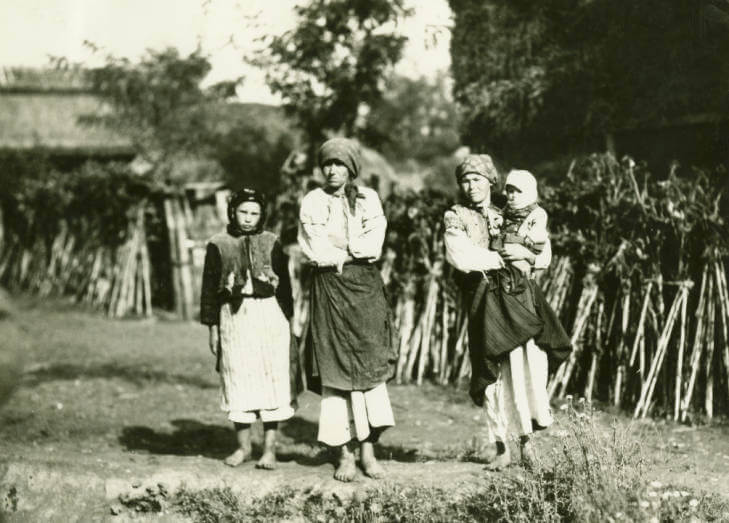
P.S.: Subscribe to our email list not to miss our further publications and feel free to contact me directly if you have any questions about your family research.
I can also suggest having a look at our updated Virtual Tours offer. It is a chance to visit your ancestral village while staying at home. The traces of the reality you can see on the photos above can sometimes be found even today.